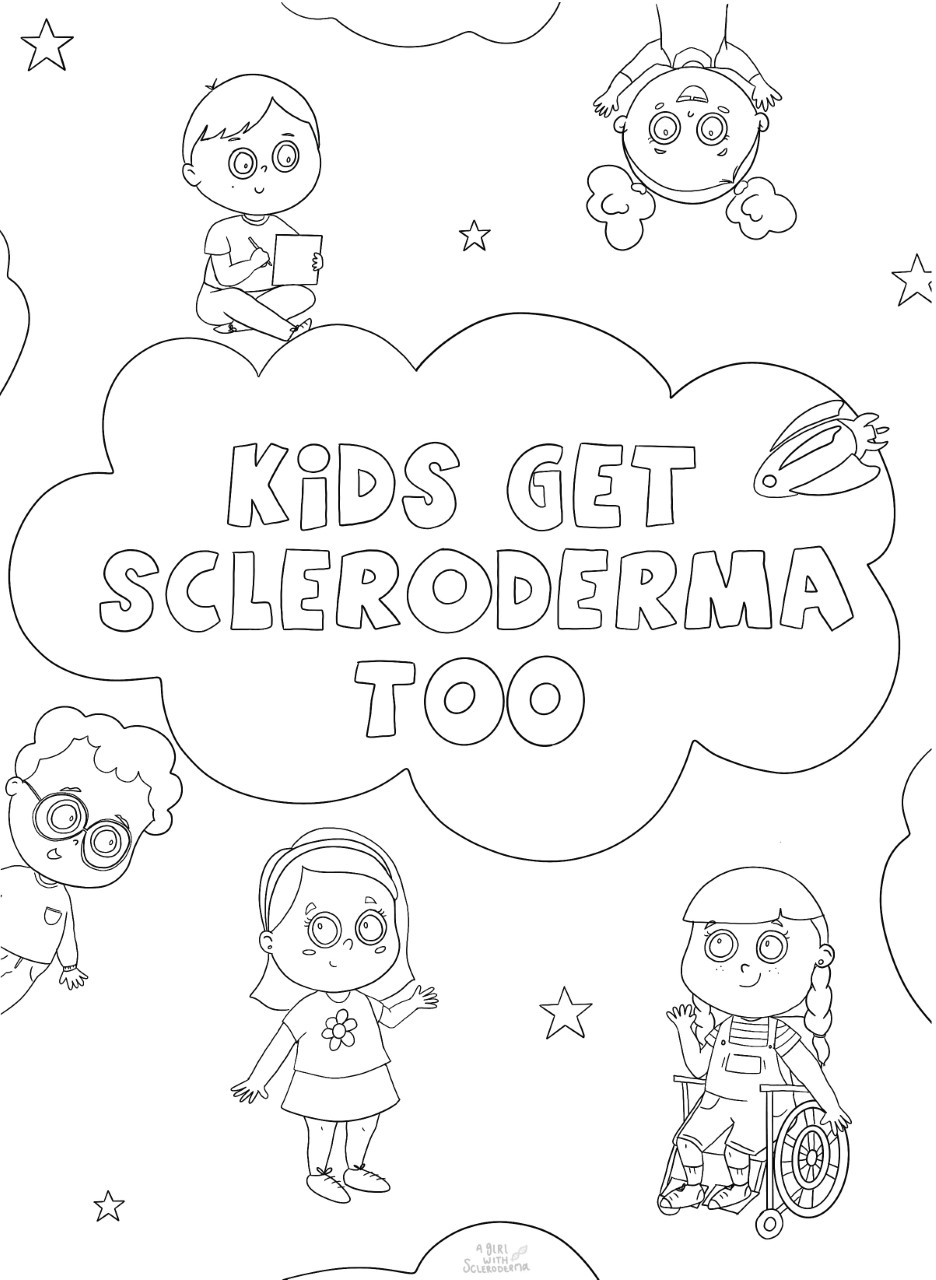Kids and Scleroderma
Download the Kids Get Scleroderma Too! Coloring Book. If you want to share your art with the Scleroderma Foundation, please email your coloring book to sfinfo@scleroderma.org.
Questions & Answers
What do you call a doctor who treats children who have scleroderma?
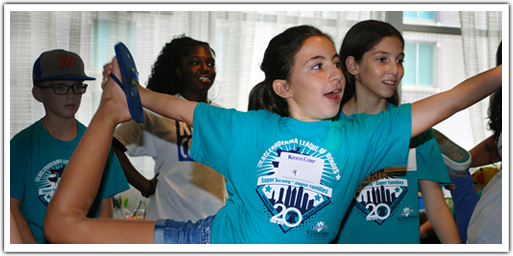 How scleroderma impacts children compared to the “average” persion with scleroderma, an adult.
How scleroderma impacts children compared to the “average” persion with scleroderma, an adult.
Responses by Kathryn Torok, M.D., Children's Hospital of Pittsburgh
- What is the incidence and prevalence of scleroderma in youth compared to adults?
- What is the difference in disease progression between a youth and an adult?
- How do symptoms among youth compare to symptoms of adults?
What is the incidence and prevalence of scleroderma in youth compared to adults?
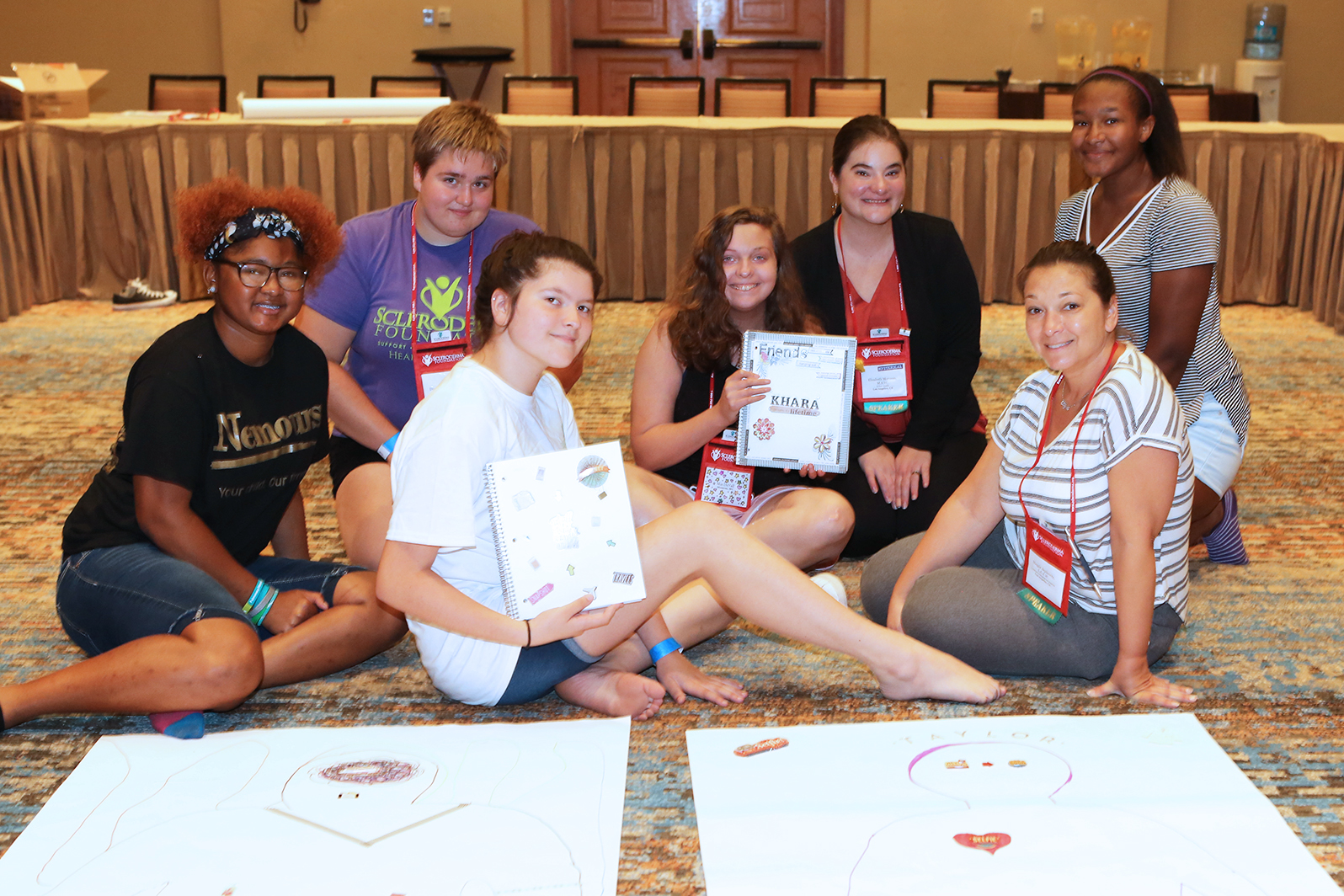 Pediatric onset scleroderma is DIFFERENT from adult scleroderma. In adults, systemic scleroderma (SSc), affecting the skin and internal organs, like heart and lung, is the more common type of scleroderma. In childhood onset scleroderma (<18 years old when symptoms start), the localized scleroderma, also known as ‘morphea’, type of scleroderma is more common. In children, LS (morphea) is about 10 times more common than SSc (systemic sclerosis). The prevalence of LS in children is similar to that of juvenile diabetes mellitus, affecting 50 per 100,000 children, whereas the prevalence of SSC in children is estimated to be 2 in 100,000. When scleroderma does occur in children, the average age of onset of juvenile localized scleroderma (jLS) is approximately 6 to 8 years old, and the average age of onset in juvenile systemic sclerosis (jSSc) is 8 to 11 years old. These two entities, localized scleroderma and systemic sclerosis, are quite distinct entities, although in a very, very small number of those with the disease, both can occur together, this is extremely rare (<0.1%). When this does occur, they typically have a similar time of onset, and one does not evolve into the other.
Pediatric onset scleroderma is DIFFERENT from adult scleroderma. In adults, systemic scleroderma (SSc), affecting the skin and internal organs, like heart and lung, is the more common type of scleroderma. In childhood onset scleroderma (<18 years old when symptoms start), the localized scleroderma, also known as ‘morphea’, type of scleroderma is more common. In children, LS (morphea) is about 10 times more common than SSc (systemic sclerosis). The prevalence of LS in children is similar to that of juvenile diabetes mellitus, affecting 50 per 100,000 children, whereas the prevalence of SSC in children is estimated to be 2 in 100,000. When scleroderma does occur in children, the average age of onset of juvenile localized scleroderma (jLS) is approximately 6 to 8 years old, and the average age of onset in juvenile systemic sclerosis (jSSc) is 8 to 11 years old. These two entities, localized scleroderma and systemic sclerosis, are quite distinct entities, although in a very, very small number of those with the disease, both can occur together, this is extremely rare (<0.1%). When this does occur, they typically have a similar time of onset, and one does not evolve into the other.What is the difference in disease progression between a youth and an adult?
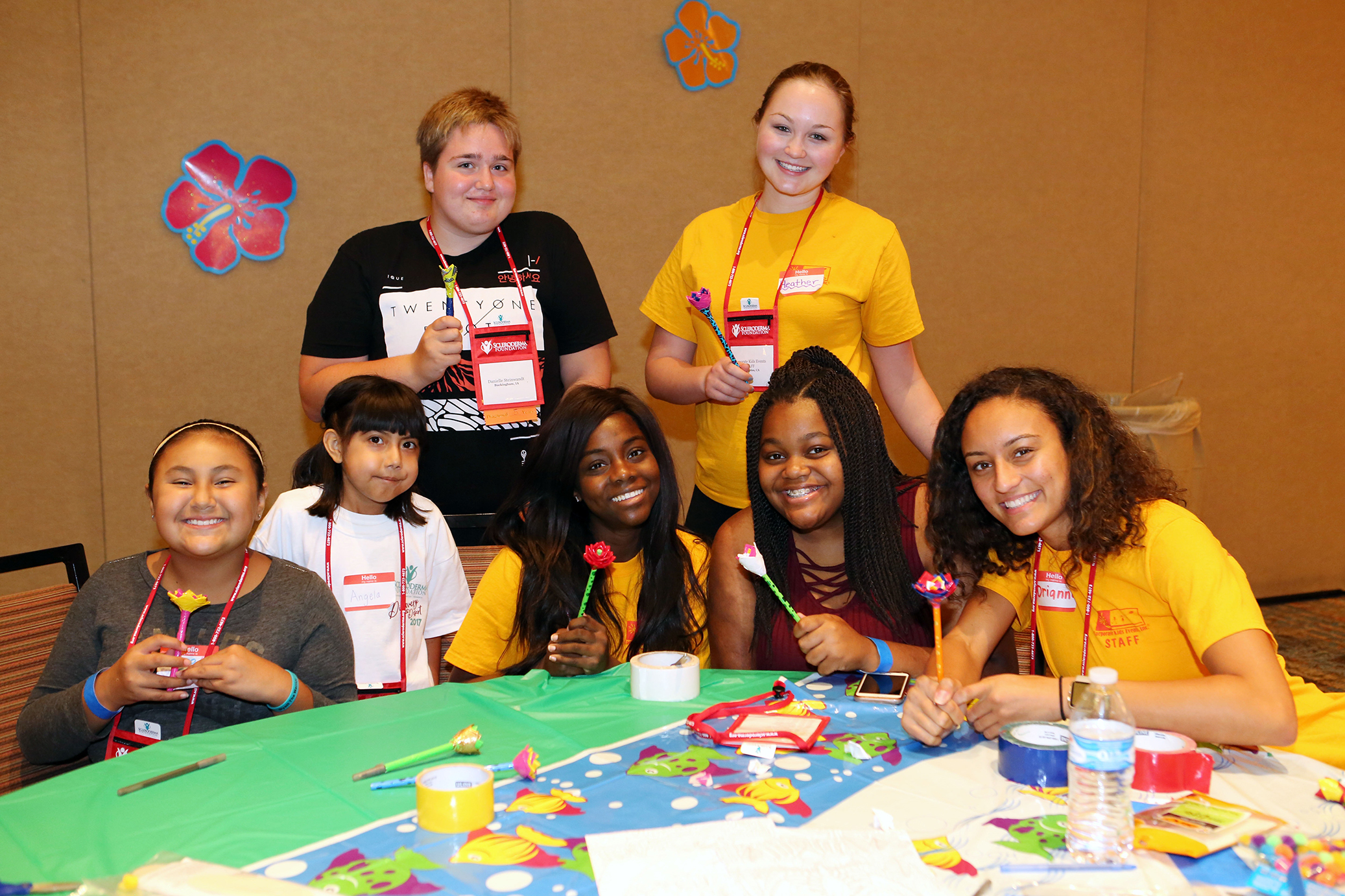 Within the localized scleroderma (LS) type of scleroderma, there are subtypes; linear scleroderma (trunk/limb, head), circumscribed morphea (superficial or deep), generalized morphea, and mixed morphea. These are the same subtypes in children and adult onset LS. However, jLS has much more frequent linear scleroderma of the trunk/limb and head (scalp/face) and mixed morphea subtypes. Whereas adult LS has morphea circumscribed (superficial) and generalized morphea plaques.
Within the localized scleroderma (LS) type of scleroderma, there are subtypes; linear scleroderma (trunk/limb, head), circumscribed morphea (superficial or deep), generalized morphea, and mixed morphea. These are the same subtypes in children and adult onset LS. However, jLS has much more frequent linear scleroderma of the trunk/limb and head (scalp/face) and mixed morphea subtypes. Whereas adult LS has morphea circumscribed (superficial) and generalized morphea plaques.- The more frequent deeper tissue involvement in jLS linear subtypes leads to certain ‘extracutaneous’ or non-skin involvement, which is more common in children, such as:
- Joint contracture
- Limb length discrepancy (shorter affected limb)
- Limb girth discrepancy (smaller girth of limb)
- Skull changes linear band on scalp or mandible/maxilla (jaw changes) if linear head involvement
- Brain lesions/changes and neurological symptoms (with linear head involvement)
- The disease duration in jLS is longer than adult onset LS. Prior literature regarding morphea, or LS, was based on adult dermatology cohorts in which it was thought that LS would ‘burn out’ after 3-5 years. Now, more recent cohort studies have shown that CHILDHOOD ONSET LS is DIFFERENT, the disease duration in jLS has a wide range from 7 to 10+ years. A recent European cohort showed 12.5% of people with jLS still had active disease 10 years later. (Marini, Zulian Autoimmunity Reviews 17 (2018) 727-734)
- In jLS, with a longer disease duration, there are more chances for damage or sequala of the underlying tissue if left untreated. Also, with childhood onset there is more of a chance to affect limb and face development and growth, which is not as much of an issue in adult-onset disease since they have already fully matured.
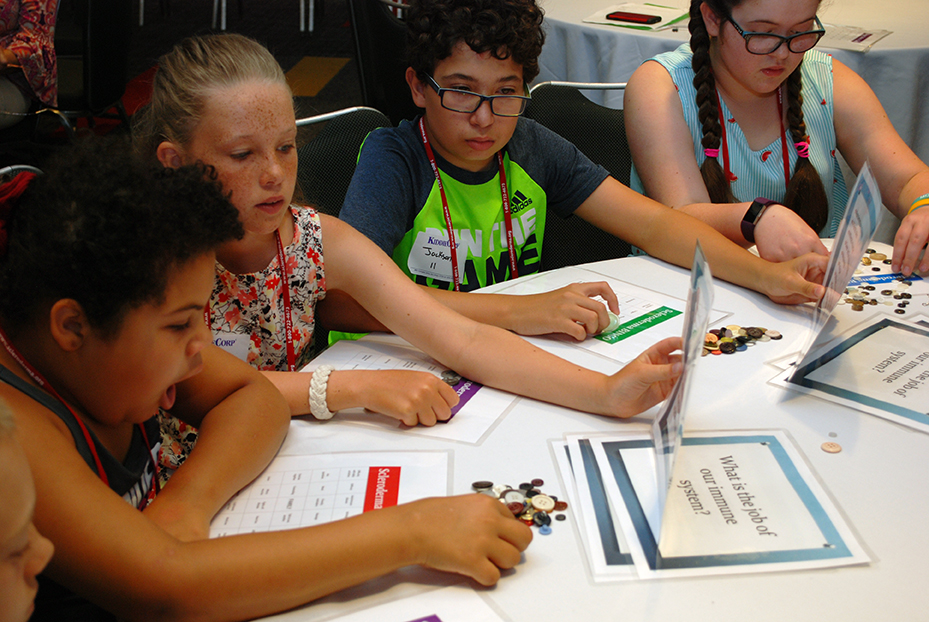 Regarding systemic sclerosis (SSc), it is actually the opposite of what was mentioned regarding LS above. In jSSc, the general severity of the disease is LESS in childhood onset then adult onset. The general rate of internal organ involvement, like heart, kidney and lung, is LESS in childhood-onset compare to adult onset SSc; more favorable.
Regarding systemic sclerosis (SSc), it is actually the opposite of what was mentioned regarding LS above. In jSSc, the general severity of the disease is LESS in childhood onset then adult onset. The general rate of internal organ involvement, like heart, kidney and lung, is LESS in childhood-onset compare to adult onset SSc; more favorable. - The subtypes of SSc; diffuse cutaneous, limited cutaneous and overlap occur in both jSSc and adult SSc, but the frequency of overlap jSSc is much more common in children. This overlap is typically manifested by the child presenting to clinic with Raynaud’s phenomenon (with or without digital tip ulcers) some muscle weakness or elevation of muscle enzymes and arthritis. These individuals overall tend to get less pulmonary involvement, like interstitial lung disease.
- The mortality rates in jSSc is MUCH LOWER than that which is reported in the adult SSC literature. Several cohort studies (in Europe and North America) have shown a much higher overall survival rate in jSSc compared to adult onset disease.
How do symptoms among youth compare to symptoms of adults?
- Juvenile Localized Scleroderma (jLS)
- Since children are growing and developing the impact of linear scleroderma can manifest in the following ways, which is not typically seen in adult-onset Ls:
- One might notice that the child’s leg, arm, or finger look smaller (underdeveloped from the deeper tissue involvement of linear scleroderma)
- It is hard to do certain extracurricular activities handstands, flexibly of legs, arms noted in those that have decrease range of motion of joints from deeper involvement
- Limp or putting weight on toes if joint contracture (decreased range of motion) lower extremity
- Smaller face, tongue from hemiatrophy associated linear scleroderma of the head.
- Juvenile Systemic Sclerosis (jSSc)
- Mentioned above regarding frequency of overlap SSC subtype in children; usually present with combination Raynaud’s (+/- digital ulcers), myositis and arthritis
- Failure to gain weight dropping percentiles on growth charts is unique to pediatric SSc since if they have gut involvement they are not getting the nutrition they need to grow, and weight may be stunted showing deceleration on growth chart
- Low BMI for children has seen in cohorts, published in recent CARRA Cohort
Videos
My Child Has Scleroderma…What Does That Mean?
Kathryn (Cassie) Torok, M.D.
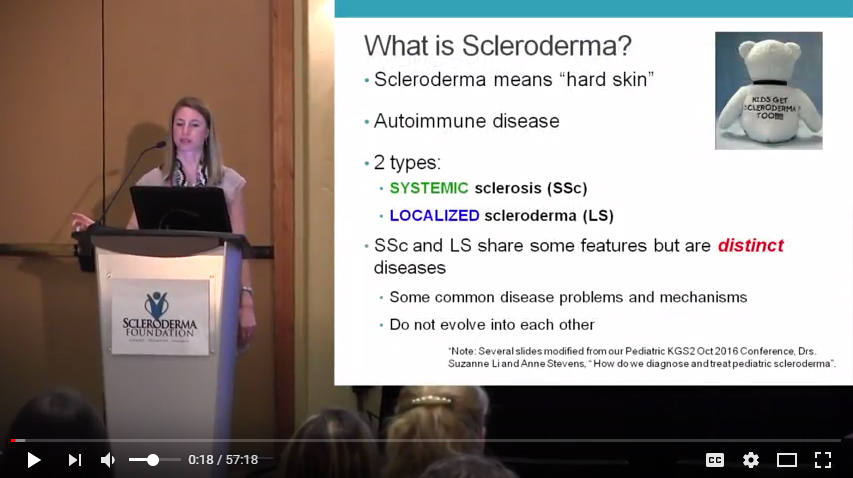
Your Child Has Been Diagnosed with Scleroderma…Now What?
Kate Silver, M.D., M.S.C.R.
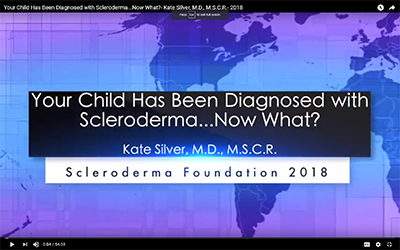
Medical Information Toolkit: How to Find Reliable Medical Information on the Internet
Jessica Farrell, Pharm.D.
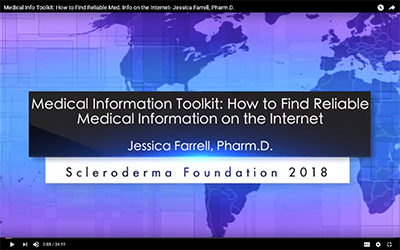
Articles
Juvenile Systemic Sclerosis
Ivan Foeldvari, M.D., Ph.D.
“On Call” excerpt from Scleroderma Voice, summer 2014
About Juvenile Localized Scleroderma
Suzanne C. Li, M.D., Ph.D., Joseph M. Sanzari Children’s Hospital, Hackensack University Medical Center, New Jersey
“On Call” excerpt from Scleroderma Voice, summer 2014
References
 Inspire is an online community where people share experiences and provide mutual support. The Scleroderma Foundation community on Inspire is moreo than 40,000 individuals who discuss a range of topics. The conversation never ends and it's always online. What do you want to talk about today?
Inspire is an online community where people share experiences and provide mutual support. The Scleroderma Foundation community on Inspire is moreo than 40,000 individuals who discuss a range of topics. The conversation never ends and it's always online. What do you want to talk about today?
Resources for Newly Diagnosed Visit the "Resources" page to find an extensive list of information that ranges from ways to connect with others dealing with the same issues as you, or referrals to organizations that provide assistance to pay for medication or to heat your home, and assorted reading lists of helpful materials.
Visit the "Resources" page to find an extensive list of information that ranges from ways to connect with others dealing with the same issues as you, or referrals to organizations that provide assistance to pay for medication or to heat your home, and assorted reading lists of helpful materials.

Watch hundreds of videos on the Scleroderma Foundation's YouTube channel that cover a range of topics from managing scleroderma symptoms to research trends, and more.
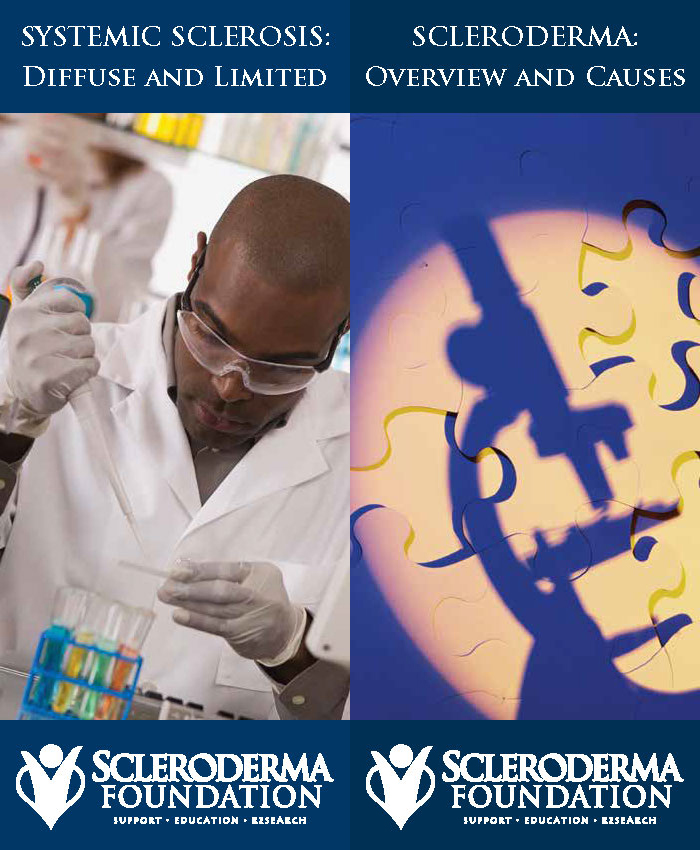 Visit the "brochure download" page to download PDFs of helpful informational pamphlets and brochures about a full range of issues. Spanish and Portuguese language brochures available, too.
Visit the "brochure download" page to download PDFs of helpful informational pamphlets and brochures about a full range of issues. Spanish and Portuguese language brochures available, too.



